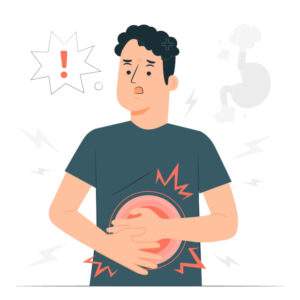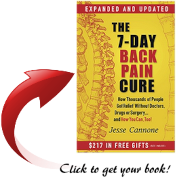Nociceptive pain is a type of pain that arises from actual or potential damage to the body’s tissues. It is the most common type of pain and is typically associated with the body’s normal response to harmful stimuli or triggers. This type of pain is a protective mechanism that alerts the body to potential danger and encourages actions to prevent further harm. In a nutshell, it is like a warning signal that tells you to be careful and protect yourself. And before we go any further, I want you to know that I am not a medical professional, and what follows is not medical advice. Just thought this topic may be of interest to you.

Image by storyset on Freepik
Here’s how nociceptive pain works:
- Stimulus Detection: Specialized nerve endings called nociceptors are present throughout the body, especially in the skin, muscles, joints, and internal organs. These nociceptors are responsible for detecting various types of potentially harmful stimuli, such as mechanical pressure, extreme temperatures (heat or cold), and chemicals released during tissue damage or inflammation. In summary, you can describe this phase as detecting danger.
- Signal Transmission: When nociceptors detect a noxious stimulus, which can cause harm, irritation, or damage to the body, they generate electrical signals or nerve impulses. These signals (aka messages) travel along special pathways in your nerves, sort of like highways for information. There are fast pathways (A-delta fibers) and slower ones (C fibers) that carry these messages to your brain. This is the sending messages phase.
- Processing in the Central Nervous System: The nerve signals travel from the site of injury through the spinal cord and into the brain. In the spinal cord, they can interact with other cells (e.g., glial, or vascular cells), leading to the amplification of, or changes to the pain signal. The brain processes these signals and generates the sensation of pain. You can call this phase the brain power phase.
- Perception: Once the brain receives and processes the nociceptive signals, it interprets them as pain. Ouch! This perception of pain guides the individual’s response, leading to behaviors aimed at protecting the body from further harm, such as pulling away from a hot object or avoiding pressure on an injured area. And finally, this can be called the feeling the pain phase.
Nociceptive pain is typically well-localized, meaning that the person can identify the specific area where the pain is originating. It is often described as sharp, throbbing, aching, or dull, depending on the type and intensity of the stimulus and the person’s pain tolerance.
There are two main types of nociceptive pain:
- Somatic Nociceptive Pain: Normally known as skin and muscle pain, this type of pain originates from the skin, muscles, bones, joints, and connective tissues. It is easily identifiable, and its specific location can be accurately pinpointed. It can be described as aching, sharp, or throbbing. An example of somatic nociceptive pain is the pain experienced from a paper cut, muscle strain, or if you touch something too hot.
- Visceral Nociceptive Pain: Visceral pain originates from the internal organs and is often described as a deep, dull ache. As such, it is known as organ pain. It can be difficult to precisely pinpoint where it is coming from, as the pain signals from internal organs may be referred to other areas of the body. That is, the pain signals originating from internal organs are perceived or felt in areas of the body that are different from the actual source of the pain. Simply stated, the pain is felt in a location that is not the same as where the problem or issue causing the pain is located. This phenomenon is known as referred pain. An example of visceral nociceptive pain is the pain associated with conditions like appendicitis, kidney stones, or when you have a cramp or experience stomach pain.

It is important to note that while nociceptive pain is a protective mechanism, chronic or persistent nociceptive pain may indicate underlying medical conditions, requiring medical attention and management. It is always recommended that you seek professional medical consultation in these situations.
To Your Success & Freedom,
Glenn Shimabukuro



